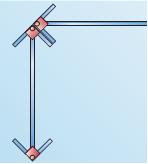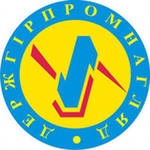Portable Welding Screen PWS
Development of ‘the National Technical University of Ukraine “Igor Sikorsky Kyiv Polytechnic Institute”
Designed to protect workers from ultraviolet radiation (UV) generated during electric arc welding in non-stationary workplaces.
During electric arc welding, the UV intensity often exceeds the maximum allowable norms at a distance of up to fifty meters from the welding site. Auxiliary workers near the welder, as well as random people, who are at a dangerous distance from non-stationary electric arc welding workplaces, may be exposed to radiation. The most common non-stationary welding places, where arc welding is performed in the open air and near which unprotected people may be, include: construction sites, places of emergency and repair work, places of use of welding for domestic purposes, etc.
The developed Portable Welding Screen PWS consists of two sliding racks which can be adjusted on height by means of plugs, and crossbeam with hooks to which the special screen light filter rolled up in a roll on a metal core clings.

Fig.1. Layout of the PWS prototype
At the bottom of the racks are 4 hooks, which allow placing a roll with a screen at a height of 0.1 to 0.4 meters for ventilation, depending on the possible place of welding. By means of plugs the core of a roll is reliably fixed on a hook that gives additional rigidity to all design. If necessary, it is possible to attach different legs to the racks. So, fastening of legs like “arrow” gives the chance to have some PWS at an angle of 90 ° (fig.). That provides a dense protection of a place of carrying out welding works.

Fig.2. Example of placement of PWS at an angle of 90 °
Screenflex PVC film with the following technical characteristics is used as a protective screen-light filter PWS (table).
PVC film has a red color, which signals a possible danger. This material best transmits light in the visible range in the thermal area, which allows you to safely observe the welding work, monitor compliance with occupational safety requirements, control the progress of the work process. The screen almost does not block infrared radiation, which does not contribute to the greenhouse effect, and provides comfortable working conditions.
Technical characteristics of Screenflex protective film
| Properties | Standart | Unit of measurement | Quality | Description |
|
1 |
2 |
3 |
4 |
5 |
| Ultraviolet and infrared light filter | EN 1598 | - | EN 1598 | Filtration power of welding arc radiation, which allows to use the material as a protective screen |
| Fire resistance | - | Standard classification of refractory properties and resistance to ignition of the material | ||
|
1 |
2 |
3 |
4 |
5 |
| UVB resistance | - | Property to resist UVB welding arc | ||
| Soundproofing | DIN 52210 | dB | >35 | The average sound pressure level (frequency 0.1–3.2 kHz), which is reduced by a curtain with an area of 1.76 m2 and a thickness of 5 mm |
| Shore hardness | EN ISO 868 | Sh A | 80 | Scale from 0 (soft) to 100 (hard) |
| Tear resistance | DIN 53515 | N/mm | 55 | A measure of the force required to break a cracked specimen |
| Resistance to rupture | ASTM | N/mm2
|
18 | Maximum force that can withstand the material to rupture |
| Stretching the gap | D 638 | % | 300 | Maximum stretching of the material before rupture |
| Stretching after rupture | EN ISO 527
|
% | 62 | Stretching that occurs after the rupture of the material at the point of stretching |
| Thermal conductivity | ASTM C 177 | W/m.K | 0.16 | The lower this value, the more insulating the material |
| Cold burst temperature | ISO 8570 | ˚C | -25 | The temperature at which the twisted material ruptures. The point of fragility. |
| Temperature of use | EN 1876 | ˚C | from -15 to +50 | Temperature range in which the material retains its mechanical properties (flexibility) |
| Heat capacity | ISO 11357 | kJ/kg.K | 1.6 | The energy required to raise the temperature of 1 kg of material by 1˚C |
| Surface resistance | IEC 60093 | Ω·cm | 4·1013 | The electrical resistance of the surface of the material, measured at a voltage of 500 V |
| Water absorption | EN ISO 62 | % | -0.2 | Change in the mass of the material after being in certain conditions |
| Density | ASTM D 792 | g/cm3 | 1.2–1.3 | Mass per unit volume |
The use of PWS provides the following advantages:
- compactness,
- ease of installation,
- ease of movement,
- the presence of settings for surface roughness,
- possibility of safe third-party supervision over the course of works.
Positive innovations also include the location of safety signs on the surface of the protective film.
You can follow any responses to this entry through the RSS feed. Both comments and pings are currently closed.









